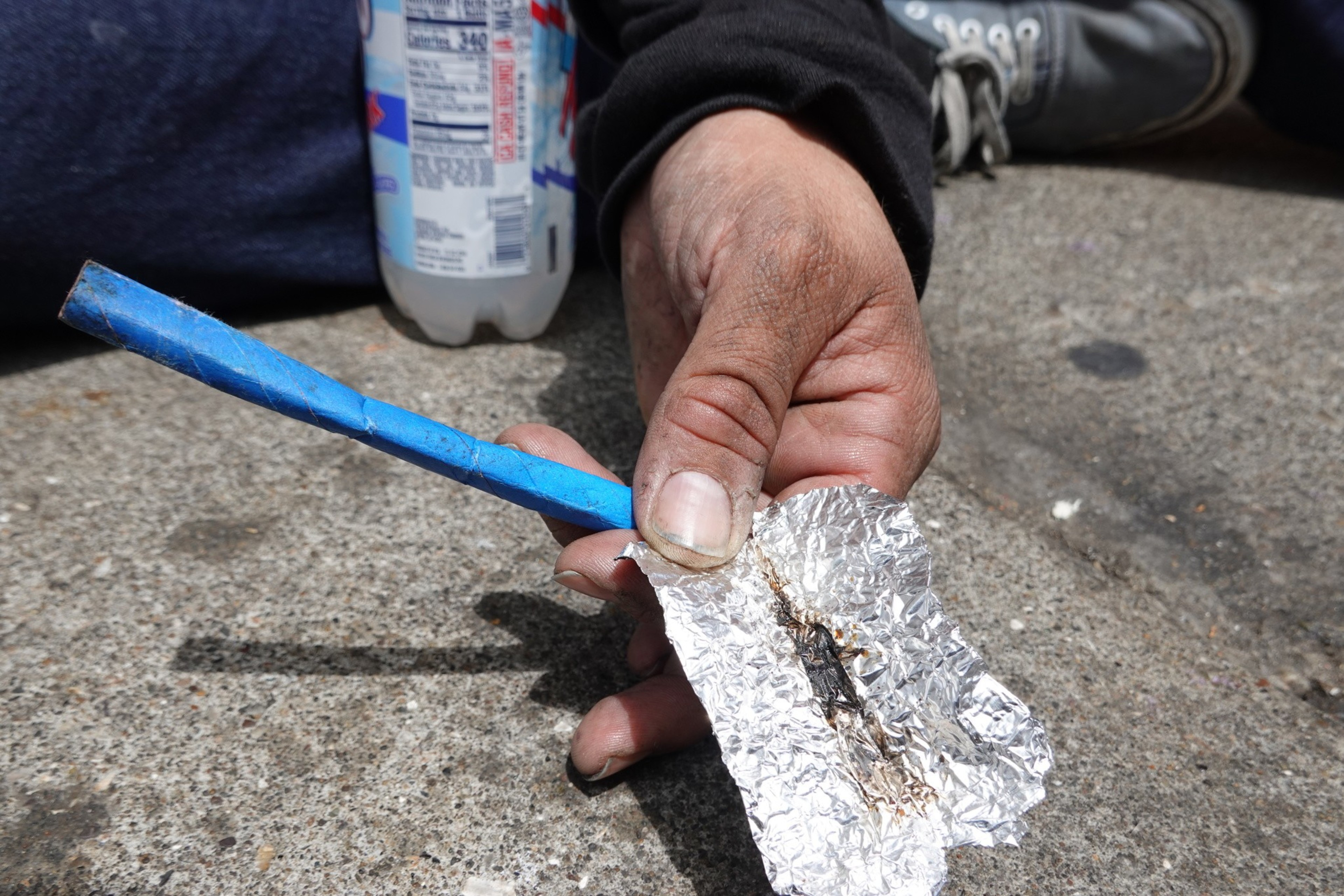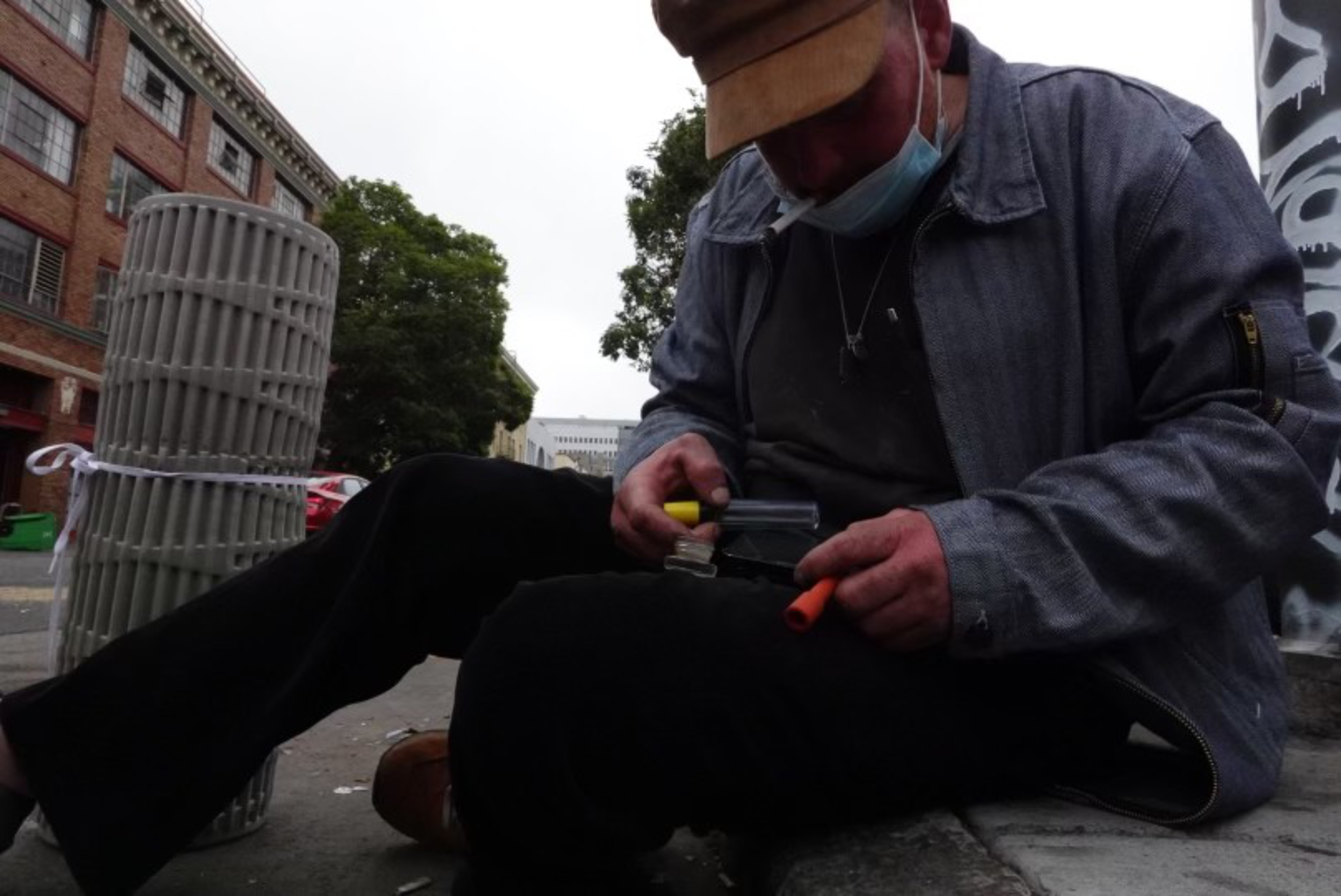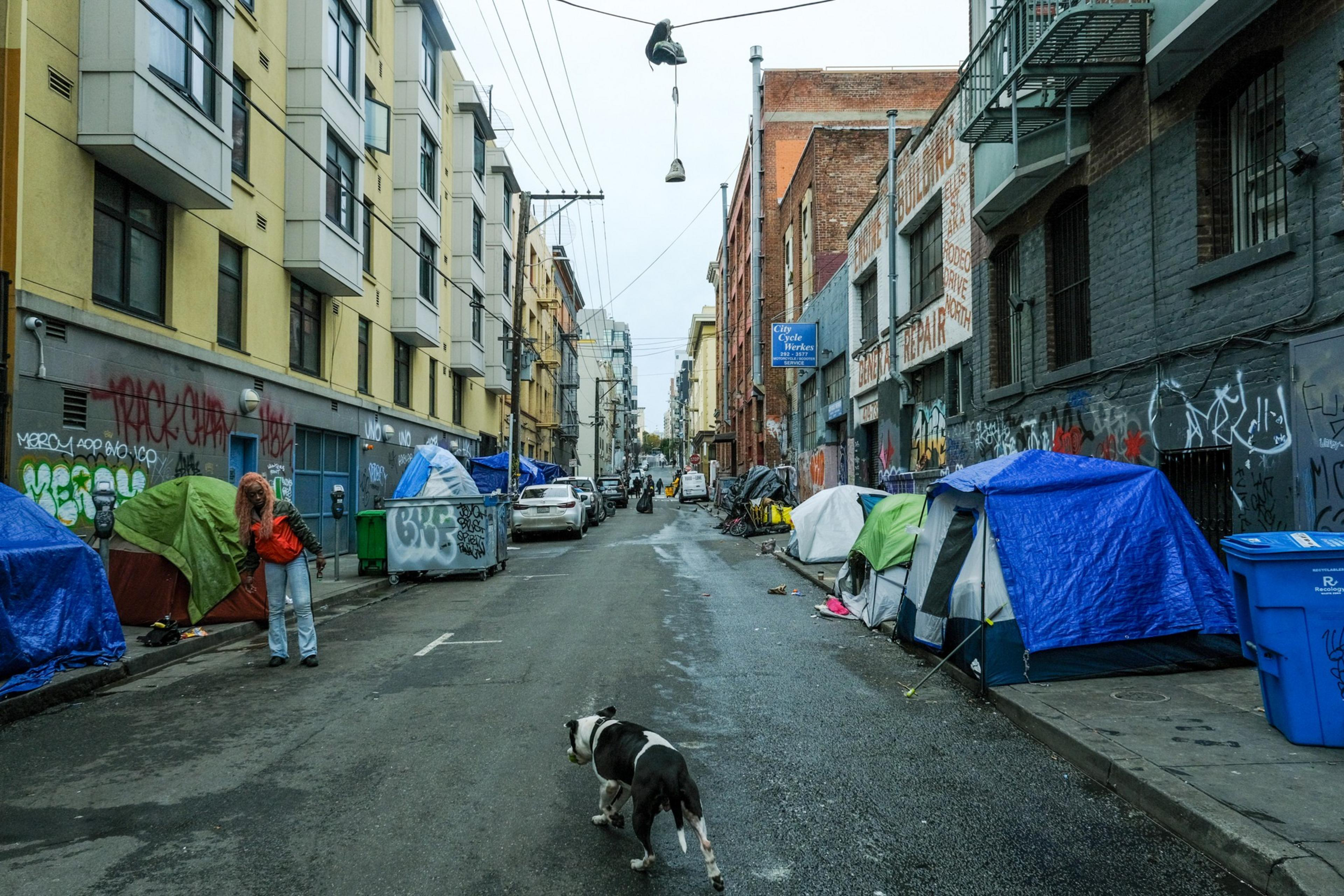Fentanyl users living on the Tenderloin’s streets say they’ve had enough. Many are chronically sick. They face near-constant scrutiny from law enforcement. And now, the drugs don’t work like they used to.
San Francisco’s fentanyl purity has dropped over the past few months, according to more than a dozen Tenderloin drug users and the U.S. Drug Enforcement Administration. The supply is diluted with unknown chemicals, plastics, and hygiene products, they say, earning the weaker drugs a new nickname: “soap”.
As the city launched a crackdown on visible drug markets last year, overdose totals climbed to record numbers. But now, rehabs are seeing a surge in patients, and overdose fatalities are down over the past three months — though still alarmingly high — in line with the national trend (opens in new tab).
There were 248 rehab admissions between April and June — the most since at least January 2021, data show (opens in new tab). And many street drug users say the lifestyle they once had is dead.
“It’s not fun anymore,” said Carmen Sierra. “The drugs we’re doing have gone so far away from what we were originally trying to do.”

Several drug users who spoke to The Standard speculated that enforcement of dealing — which has amounted to nearly 1,300 arrests and the removal of 540 pounds of drugs since May 2023 — has forced a drop in purity.
“It tastes like Fisherman’s Wharf,” a man who gave the name Apache said of the fentanyl. “It tastes the way a wet inner tube smells.”
DEA data show that fentanyl purity across California has dropped to 23% from 29% last year. City health and law enforcement officials have refused to speculate as to why.
The Department of Public Health has deployed street medics, expanded hours at intake centers, opened hundreds of new treatment beds and deregulated prescriptions to withdrawal medications. Gary McCoy, a spokesperson for San Francisco’s largest drug treatment nonprofit, HealthRIGHT 360, said his organization has fixed staffing issues that caused patients to be turned away by raising salaries and investing in recruitment.
The city has also dramatically increased its distribution of naloxone, an overdose reversal drug, distributing more than twice the number of doses in the first half of this year than in all of 2021.
A total of 462 people died of overdoses in San Francisco over the first eight months of this year, roughly 20% less than at this point last year. The Department of Public Health said it has seen a 35% increase in treatment admissions, a 32% increase in methadone prescriptions, and a 46% increase in people accessing buprenorphine so far this year.
Daniel Ciccarone, an addiction researcher at UC San Francisco, speculated that the decrease in fentanyl purity — and the corresponding decline in overdoses — may be traced to “supply shock” caused by the Sinaloa cartel’s apparent ban on the sale of the drug (opens in new tab) last year.
Ciccarone noted that local efforts may play a role. But because the decline in deaths happened suddenly, instead of over an extended period, he pointed to the cartel bowing out.
“It could be that everyone should get a slap on the back,” Ciccarone said. “But it looks a lot like a supply shock to me.”
‘I can’t keep living like this’
Some users say the lower fentanyl potency is responsible for a rise in chaos on the streets. Others say it has inspired them to leave the streets behind.
Michael Butler, who has been homeless in San Francisco for 10 years, said he recently applied for a methadone prescription, explaining that he no longer finds satisfaction in his drug habit.
“I can’t keep living like this,” said Butler. “I want to do landscaping. I want to get a job and be an active part of society.”
But some drug users told The Standard they worry that a strong dose of fentanyl could cause an overdose while their tolerance is low. A few warned that a potent batch hit the streets last week.

“Who needs good fire? I got fire fentanyl,” a dealer announced Tuesday as he strolled down Ellis Street.
A man named Austin offered the dealer a pair of Adidas sneakers for the strong stuff. Neil Leuthold, a 52-year-old who has been homeless in San Francisco for more than 30 years, offered a dab nail, used to smoke drugs.
The dealer declined.
Austin turned to this reporter.
“You got a few bucks, David?” Austin asked. “We could test the quality for you right now.”
This reporter declined.
“Gosh, I really wish I had it,” Luethold said. “I’ve had a bag of shit all day.”
Luethold said he desperately needs help, but when he sought addiction treatment a few months ago, most clinics wouldn’t admit him without an ID, which he had lost. Other programs that don’t require ID were at capacity, he said.
“There were so many people running to the methadone clinics,” he said. “I couldn’t even get in.”
The Department of Public Health didn’t directly address Luethold’s struggle to access treatment. However, it said the city “has programs for people at every stage of recovery,” and users can access treatment at 1380 Howard St. or by calling 888-246-3333.
But Luethold seemed dissuaded.
“You just don’t have the patience for that shit when you’re sick. I’m a mess,” he said. “I need to be in the hospital so bad right now. I’ve got lice, scabies, staph. But I’ve got to deal with my dope habit first.”
